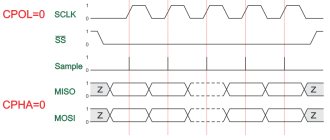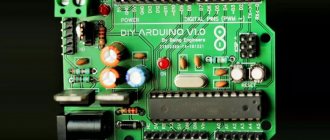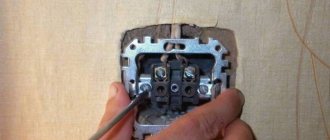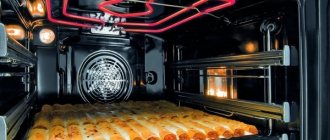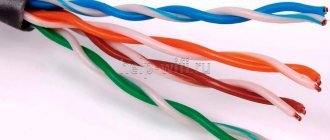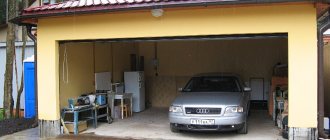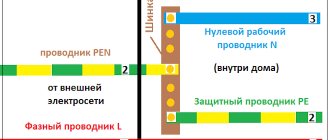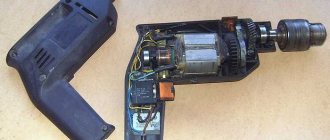Many motorists have trailers on their farms for transporting large cargo. In accordance with the current Rules of the Road, any towed vehicle (VV) must be equipped with working light signals. The trailer is connected to the vehicle's electrical network using a plug and socket. To synchronize the signals of both vehicles, there is a universal trailer connection diagram and towbar socket pinout.
About connection methods and types of trailer connectors
To transport cargo trailers, a special traction coupling device is used, made of a powerful power steel structure, which is attached to the rear of the steel platform by an automobile mechanism.
A towbar connection diagram is required, which will ensure safety and compliance with road accident regulations. Many cars provide additional options for the car with a detachable unit: a tow bar socket and electrical wires connecting the power supply and control of the car with an additional traction device.
Basically, motor transport mechanisms are equipped with these devices as an additional service when purchasing a car. The towbar socket can be connected to the car yourself; pinout of the towbar socket and installation of electrical wiring is not difficult to do yourself. Let's look at the trailer connection diagrams and the pinout of the towbar socket.
There are the following connection diagrams for the towbar socket:
- Regular Russian standard with a socket for seven groups of connecting contacts;
- European and American standard for thirteen detachable connections;
- Special connector.
By the way, in Russia and America they also use a method for connecting a towbar with seven and thirteen connectors. Thirteen connections are used in the main connection of electrical wiring in transportable caravans.
When installing and connecting the control circuit for the rear parking devices of a vehicle, you must follow the rules for connecting the socket for a passenger car trailer, the correctness and sequence of operations when turning it on.
You should not perform such operations by poking at the contacts of light devices; a short circuit may occur or the automatic protection of the vehicle control unit may be triggered. And you cannot connect conductors using the twisting method; a poor-quality connection can create an incorrect command, and the devices will be blocked from turning on.
Modern car circuits are equipped with various electronic devices that use electronics, modules, and matching units. Therefore, an additional special connector is included in the complete set of devices.
In the pinout of a truck trailer socket, conductors are used from conductors with a cross-section of 1.5 or 2 mm, more precisely, 1.5 mm will have a total of 6 conductors, 2 mm will have one wire.
The towbar socket with seven connectors has the following pinout structure:
- left turn signal;
- reverse;
- mass 12V;
- right turn signal;
- right side signal;
- Stop signal;
- left side signal.
The thirteen-pin detachable towbar socket consists of the following equipment:
- left turn indicator;
- rear fog lights;
- weight in the chain 1,2,4-8;
- right turn indicator;
- right side signal;
- Stop signal;
- left side signal;
- reverse signal;
- +12 V constant;
- +12V when the ignition is turned on;
- weight in chain 10;
- Reserve pin;
- weight in chain 9.
Connectors with 13 contacts are characterized by the presence of additional contacts with negative and positive polarity, allowing you to connect additional devices such as cameras, lighting devices, etc.
The detachable connection of the towbar electrical wires with seven and thirteen detachable connections consists of two connecting units: a female socket and a male plug. The towbar socket is mounted on the vehicle next to the towbar mounting point.
The trailer fork is installed with an extended harness of connecting conductors on the trailer in order to create a free docking of the trailer and free installation of electrical wiring.
In cases where a special connector is used in cars with an on-board computer and other electronic devices, it is better to use an electronic coordination unit in the installation of the electrical part of the signal control of the trailer mechanism; in other cases, it is possible to install a manual electrical network for the trailer.
Installation
Installation of the towbar is carried out in the following sequence:
- The car is driven onto an overpass or inspection hole. De-energize the vehicle wiring; to do this, disconnect the battery.
- Remove everything in the trunk. We are talking not only about personal belongings, but also a repair kit and a spare wheel. You should also remove the upholstery by disconnecting all the clips.
- Place the towbar at the installation site. Fix the device, correctly mark the places where the fasteners will be installed.
- Next, you need to drill holes wherever the fasteners will be installed. To avoid possible malfunctions in the future, the holes for fastening components must be treated with an anti-corrosion agent. This will help increase the service life.
- Using bolts and washers, install them into the holes and tighten them well using the appropriate wrench.
- Then, you need to make two more holes inside the trunk and at the bottom of the spar; use reinforcing pads while working. This will not only strengthen the fastening, but will also help relieve the load from the body.
- Next, the bolts are inserted and the linings are installed. The final stage will be the installation of the electrical part. To do everything right, we recommend that you listen to the tips you will learn about below. Choose one of two methods. You can learn more about installing a towbar in the video below.
What is needed to connect
Before connecting the trailer socket, you need to prepare and buy the necessary material in advance.
The package includes the following equipment:
- Socket cover for tow bar. Please note that there is a cover equipped with a rubber seal. When purchasing, inspect the product for the fit of all casing elements and for the absence of loose housing or contact connections. Pay special attention to the condition of the threaded connection and the fastening of screws to the terminals.
- Wire (one core) with a cross-section of 1.5 sq. mm or more. When purchasing, check the possibility of using it in the electrical wiring of a vehicle.
- Corrugation made of metal or polypropylene. Used to insulate wire harnesses and protect against mechanical damage. The average length is up to 2.5-3.0 meters. Immediately take 20-30 plastic clamps to secure the harnesses.
- Connecting blocks. When choosing, give preference to a model with sockets in which fuses can be installed.
- Tools: set of wrenches, drills and bits, screwdrivers, soldering iron, electrical tape.
The specified equipment is usually sufficient for installation work. If something is missing, the scarce elements can be purchased separately.
Pinout of 7 pin socket
Below is a drawing showing the wiring of a 7-pin connector (socket and plug). The typical colors of wires for Russian-assembled cars are indicated (color deviations are possible). In European machines, not all contacts on the connector may be used.
Pinout of the 7-pin towbar socket (A) and the corresponding trailer plug (B)
Explanation of the picture:
- Left side turn signal control signal.
- PTF connection (in foreign cars the contact may not be used).
- Weight.
- Starboard turn signal control signal.
- Side lights on the left side.
- Brake light control.
- Side lights on the starboard side
Currently, the 7-pin connector is practically not used in modern foreign cars; 13-pin sockets are installed there. If the trailer has an old type plug, you can connect it to the new Euro connector using a special adapter, which is much easier than changing the connector.
Adapter from 7 to 13 pins
Vehicle installation
Basic procedure
First, remove the bumper and cut off the lugs. Drill holes if necessary and weld the fasteners.
Here's how to connect a trailer towbar to a car:
- We will need an inspection hole on the overpass or in the garage into which we drive our vehicle.
- Now we turn off the power from the mains by disconnecting the negative terminal from the battery.
- Installing towbars will require removing everything from the trunk and removing its upholstery.
- The device itself must be attached to the place where it is planned to be attached and the necessary markings must be made.
- At the attachment point, holes are drilled on both sides with a drill, which are best treated with an anti-corrosion agent to extend service life;
- As the photo for this article suggests, we can tighten the hitch using nuts, washers and bolts, as well as a suitable size wrench.
- Now you need to remove the load from the car frame and provide a more reliable fastening. To do this, we make a couple of holes at the bottom of the side member and from the inside of the luggage compartment with the installation of reinforcing linings.
- Tighten all the necessary bolts with wrenches.
Fastening to the car frame
Using the connection diagram
A ready-made towbar, as a rule, already has all the necessary holes for fastening, which is taken care of by the towbar manufacturers. Now we can start connecting the hitch.
We cannot do without an outlet that connects the electrical wiring of the car and the trailer. The towbar socket diagram is usually included in the kit. As for the electrical equipment of the coupling device, it consists of a plug socket with a set of wires. The color of the wiring may not match the color of the wires in the photo.
Bolted to the bracket, the socket is connected to the main wiring. When connecting, you need to look at the colors of the wires according to the diagram. You need to connect it to a standard connector, which can be 7-wire or 13-wire (only on foreign cars).
Car installation
Below are instructions with which we can connect the towbar to the electronics of the car:
- We will need a hole located in the bottom of the trunk to connect the socket to the rest of the wiring. In the case where the coupling device is made independently, you will have to drill the holes yourself. Consider the location of your future location;
- After the socket is installed on the towbar, we will stretch the wire through the hole in the trunk and connect it to the socket.
The connection diagram for Largus can be of some help if you are the owner of this particular model
- During connection, the wiring must be connected in such a way as not to confuse the order. If the number of wires does not match, purchase an adapter for the socket. A special tube into which you need to pass the assembled wiring kit will help protect the electrical package from external damage and short circuits;
- Secure the wires to the trunk walls and carefully cover them with upholstery.
- You can connect the trailer, check how high it is from the ground, and whether its brake lights, turn lights, and running lights are working.
The towbar can be installed on any car. Installation points are indicated in the product instructions
Electrical work
Electrical equipment for towbars is a different area than the manufacture of towbars. When choosing a device, select it in such a way that it does not cover the vehicle’s license plate. Sometimes you have to cut off part of the bumper for this purpose.
The photo shows the installation process on a ninth generation VAZ
The opposite situation may also arise when there is no need for a coupling device. For example, the owner purchased a vehicle with a tow bar installed, but wants to remove it. In this case, you will need to work backwards to disconnect all the wiring that is assembled together.
- In the same way as we connected the towbar socket, we will disconnect it in the same way.
- Mechanically it can be dismantled using a special key.
- If it is not there, then you will have to cut off the bolts or welds. It is better to entrust such work to experienced mechanics and electricians.
Pinout of 13 pin socket
The advantage is reinforced wiring and the number of connectors:
- 1 – yellow – left direction indicator signal;
- 2 – blue – signal from rear fog lights;
- 3 – white – negative signal for contacts 1 to 8;
- 4 – green – right direction indicator signal;
- 5 – brown – size signal on the right side;
- 6 – red – stop light;
- 7 – black – size signal on the left side;
- 8 – pink – reverse lights signal;
- 9 – orange – permanent positive contact;
- 10 – gray – positive contact during ignition;
- 11 – black and white – negative signal for pin 10;
- 12 – white-blue – reserve contact;
- 13 – white-orange – negative signal for pin 9.
Source: 2shemi.ru
Pinout of 15 pin connector
This type of connector for connecting trailers and semitrailers is an accepted standard for tractors from almost all manufacturers, including American ones. Considering the requirements for trailers of this class, a standard 13-pin connector is not suitable for powering and controlling their electrical equipment.
Appearance of a 15 pin socket
Matching table for 15-pin connector.
| Pin number | Coloring | Function |
| 1 | Yellow | Left side turn signal |
| 2 | Green | Starboard turn signal |
| 3 | Blue | PTF |
| 4 | White | Earth |
| 5 | Black | Parking lights on the left side |
| 6 | Brown | Side lights on the right side |
| 7 | Red | Brake light control |
| 8 | Pink | Reverse signal |
| 9 | Orange | +24 V |
| 10 | Gray | Transmission of an alarm signal from sensors installed on the brake pads |
| 11 | White-black | Signal from spring brake pressure sensors |
| 12 | White-blue | Bridge lift control |
| 13 | White-red | exchange of information signals |
| 14 | White-green | CAN-H |
| 15 | White-brown | CAN-L |
Recommendations
Comments 11
I remember I came to buy a trailer. The towbar was in the trunk. While my wife was filling out the paperwork, I installed the tow bar. I connected it according to his instructions - it turned out to be wrong. I connected it according to the trailer instructions - everything works. They could have messed up the wiring in the trailer - I don't know. One hell of a lot, the wiring will have to be changed this spring - the stoppers are dead. So don’t blindly trust the instructions, use the Tseshka or a banal sampler with a light bulb.
By the way, I didn’t know about the rubber plug; I ran the wiring through the left air duct. It needs to be redone.
In principle, they’ve already suggested it, but I’ll add some little additions for completeness...
The colors in the car are:
Driver's side light Black - Red foot+ Green reverse+ Orange/black rear fog lights+ Yellow dimensions+ Blue-black left turn+
Passenger side light Blue is a right turn+
The right turn signal cord stretches through the standard rubber bands to the lights, remove the rubber band, thread the connector, wind up the wire, insert the connector into the headlight, wrap it around the rubber band with electrical tape to the standard wiring, and return the rubber band to its place, under the plastic trim across the trunk, secure the blue wire with electrical tape and that’s it ...
In the towbar socket the numbers are signed, but... 1) left side 2) rear PTF 3) weight 4) right side 5) reverse 6) feet 7) dimensions
I recommend starting with the marker pin (in the center of the socket)
I pull the entire tourniquet outward in a different way than in the picture. a) On the driver’s side, inside the wing, at the canopy, remove the air duct firecracker, wiggle it up and pull it up... b) Spray everything with water... c) Having wound all the wires at the end with electrical tape, pull the cable through a thin round elastic band, where the black and yellow wires pass d) Intercept it from below under the elastic band, we pull it all back into the cabin. This way we pull the harness through the rubber band and do not interfere with the reinstallation of the flapper valve. If the valve is not installed, then there will be an incredible amount of dust in the cabin(!) e) We tie 60 centimeters to a broaching wire and push it back down, closer to ourselves, sitting in the trunk, the harness passes in the area of the ventilation in the bumper, but closer to the driver ( you need to get there, it’s a matter of dexterity and luck) f) We unscrew the mudguard using torx screws (about 4 pieces, T20 or something...) and 2 nuts for 10 (m6) and catch our wire with a bundle below. g) We pull it out, check that there is enough length - sometimes the cable gets twisted and you need to untangle it.
We climb under the car, we see that the bumper has a U-shaped profile, at the end there is just a “window” with a partition, we pass our harness through there, and through the windows we lead towards the socket.
We secure the cable with nylon ties after connecting the socket (so that it can be laid properly with the length of the cable)
After connecting the wires to the socket, I recommend treating it thickly with lithol to avoid corrosion, otherwise it will instantly gnaw everything... The same thing happens on the outside. Although I use nanoprotek liquid super-insulation in a fine aerosol for these purposes - everything has been fine for a couple of years now, these machines flash by, everything works. I wrap the elastic band itself dry with good electrical tape in order to isolate it from the oncoming flow of water. The rubber band on the socket usually has a hole for draining water; place it down in advance.
Change the fuse in the cabin for the brake from 10 to 15 amperes, in my opinion, otherwise due to the increased load on the brake light circuit, the standard fuse burns out and you get glitches in the form of a) the interior light does not work b) the instrument arrows freeze when the ignition is turned off where they were c) the arrows don’t work d) the check light on the car asks you to check the brake pedal circuit
Most trailers have this exact wire pinout; there are a couple more options, but we practically don’t see them here.
Step-by-step connection instructions
It is recommended to connect the towbar socket to the car with your own hands without cutting the standard wires, but using intermediate connecting blocks, as when installing factory adapters.
You need to purchase the necessary materials:
- the connector itself with a protective cover;
- electrical blocks of suitable design;
- cable with colored conductors with a cross-section of at least 1.5 mm2;
- clamps;
- protective corrugation.
Scheme of work:
- Cut a piece of cable to the required length with plenty of room for processing the ends.
- Remove insulation and tin the wire tails.
- Pass the cable inside the corrugated sleeve.
- Solder the contacts in the socket body, referring to the socket diagram of the car's tow bar.
- Secure the wires in the connecting blocks for the rear lights, also checking their order.
- Insulate all connection points and connect the pads to the car's lighting connectors.
- Lay the harness to the installation location on the tow bar, secure it and close the holes in the body with plugs.
It is better to use silicone sealant to insulate cable entries into sockets and connectors.
Installation materials
In order for the socket of a passenger trailer to work flawlessly, it is better not to skimp on material. To work you will need:
- Stranded wire with a cross-section of at least 1.5 mm. The insulation must ensure operation under conditions of temperature changes.
- Corrugation for laying wires in a single bundle. It will additionally create protection.
- Socket. You need to make sure that the lid closes tightly without distortion. And the O-ring ensured tightness. The terminals inside should not be loose, otherwise this will lead to poor contact.
- Connectors or crimp locks for splicing wires.
The socket operates in an aggressive environment, so you can additionally use silicone grease or grease to protect the contacts.
Why do you need an electronic matching unit?
Not in all cases it is possible to simply connect the sockets of the towbar and trailer. If the machine has complex electronics, a matching unit will be required.
Its use allows you to avoid errors when testing the operation of lighting equipment and vehicle electrical systems.
In addition, the matching unit is an invariable thing when it is necessary to transmit a signal using a multiplex bus.
The connection diagram is as follows:
- Signals from the car are sent to the matching unit.
- The latter processes the information.
- If there are no conflicts, the signal is transmitted to the trailer of the car or truck.
For correct operation, the unit must be connected to the battery and the wires must be connected correctly (taking into account the pinout).
The connection diagram is shown below.
Direct connection diagrams
They go where the brake lights are. When removing reflective covers, take into account the minimum pressing of the cushioning foam, which serves to prevent dust from being sucked into the interior. Although there are connection diagrams on the Internet, performing this procedure yourself is not so easy. Before connecting, it would be good to study the approaches to the wires. A nuance: on the one hand, cutting the wiring is too lazy, on the other, it’s a pity. Therefore, for the lazy method, connectors with three ends are provided: two with plugs that connect standard devices, and one end with bare wires to the towbar socket.
In addition, you will need additional materials:
- Socket with cover.
- Switching blocks. They come with fuse sockets.
- Wire with a cross section of 1.5-2 mm square. Insulated stranded or single-core wires are used.
- Silicone automotive sealant.
- Tourniquet. It is a 3-meter corrugated pipe made of plastic or metal.
- Clamps for fixing the harness.
It is not difficult to purchase one set. The factory version requires complex switching for the following reasons:
- Using a smaller load eliminates melting and short circuits;
- Guaranteed proper operation of lighting fixtures.
In theory, 11 wires are placed in a bundle. Since the right and left sides are synchronous, the switching theoretically fits into the usual 7 wires. But in this situation, there are three lamps per core, and this increases the load. There is another way to divide the current into right and left sides. The number of wires, mounting sleeves, and fuses increases. This circuit complies with safety standards.
Communities › Chevrolet Niva › Blog › Electrical connection on the tow bar via standard wiring
Problem solved. I won’t delete the topic, maybe it will be useful to someone. In general, the pinout of the contacts on the towbar electrical harness (cat. no. 00001-7504552-00-0) is as follows
, see picture. Borrowed from 1AlexD, I think he won’t mind
Addition for connecting towbar electrics from Technomania
The colors in the car are:
Driver's side light Black - Red foot+ Green reverse+ Orange/black rear fog lights+ Yellow dimensions+ Blue-black left turn+
Passenger side light Blue is a right turn+
The right turn signal cord stretches through the standard rubber bands to the lights, remove the rubber band, thread the connector, wind up the wire, insert the connector into the headlight, wrap it around the rubber band with electrical tape to the standard wiring, and return the rubber band to its place, under the plastic trim across the trunk, secure the blue wire with electrical tape and that’s it ...
In the towbar socket the numbers are signed, but... 1) left side 2) rear PTF 3) weight 4) right side 5) reverse 6) feet 7) dimensions
I recommend starting with the marker pin (in the center of the socket)
I pull the entire tourniquet outward in a different way than in the picture. a) On the driver’s side, inside the wing, at the canopy, remove the air duct firecracker, wiggle it up and pull it up... b) Spray everything with water... c) Having wound all the wires at the end with electrical tape, pull the cable through a thin round elastic band, where the black and yellow wires pass d) Intercept it from below under the elastic band, we pull the whole thing back into the cabin d) We tie it to a 60 centimeter broaching wire and push it back down, closer to ourselves, sitting in the trunk, the harness passes in the area of the ventilation in the bumper, but closer to the driver (you need to get there, it’s a matter of dexterity and good luck) f) We unscrew the mudguard on the Torx and catch our wire with a bundle below. g) We pull it out, check that there is enough length - sometimes the cable gets twisted and you need to untangle it.
We climb under the car, we see that the bumper has a U-shaped profile, at the end there is just a “window” with a partition, we pass our harness through there, and through the windows we lead towards the socket.
We secure the cable with nylon ties after connecting the socket (so that it can be laid properly with the length of the cable)
After connecting the wires to the socket, I recommend treating it thickly with lithol to avoid corrosion, otherwise it will instantly gnaw everything... The same thing happens on the outside. Although I use nanoprotek liquid super-insulation in a fine aerosol for these purposes - everything has been fine for a couple of years now, these machines flash by, everything works. I wrap the elastic band itself dry with good electrical tape in order to isolate it from the oncoming flow of water. The rubber band on the socket usually has a hole for draining water; place it down in advance.
Change the fuse in the cabin for the brake from 10 to 15 amperes, in my opinion, otherwise due to the increased load on the brake light circuit, the standard fuse burns out and you get glitches in the form of a) the interior light does not work b) the instrument arrows freeze when the ignition is turned off where they were c) the arrows don’t work d) the check light on the car asks you to check the brake pedal circuit
Most trailers have this exact wire pinout; there are a couple more options, but we practically don’t see them here.
Hello guys. This is a question, I bought a barefoot towbar,
and standard wiring with connectors, i.e. without insert (cat. no. 00001-7504552-00-0).
The color and number of wires on the wiring differ from the towbar diagram. There are 7 wires on the wiring, respectively, on the socket there are seven “pins” for them, but in the diagram for the tow bar, only five pins are used, and the colors are different accordingly. Maybe someone connected through this harness, otherwise I don’t want to call. Tell. Thanks in advance!
It is also important to know 5 nuances about connection:
Figure 4. 5 nuances about connecting the towbar socket
Look at the towbar connector in the picture. Switching off will not be particularly difficult, especially if there is a universal component element, which is a towbar connector. It is very convenient to make the connection if the plug and socket match the connectors. Accordingly, a seven-pin socket must be connected to a seven-pin plug. In this option, you can make a normal connection, do not forget to combine the required sockets with the corresponding sockets.
Figure 5. 7 pin Figure 6. Cover
First familiarize yourself with the location of all seven connectors. If they coincide visually, then you can simply try to connect one to the other. If the towbar socket is of high quality, then it must have a cover. It is needed to protect against various external influences. Such protection will be required at a time when the towbar is not connected to the trailer.
Figure 7. Splicing
You can connect electronics in a simpler way. To perform such an operation, it is necessary to combine several leashes into a group and create an effective symbiosis of the supply of electrical signals. You can splice the contacts of two headlights, reverse lights, brake lights, fog lights and side lights. This is explained by the fact that when operating the car they will be used synchronously. Fastening is provided using brackets.
The next method involves changing the car's electrical system. This change consists of combining several wires that lead to the rear light and signal electrics of the trailer. They must be connected to the wires from the coupling device. If the vehicle has a complex electrical circuit, then you will have to spend a little more effort than in previous options. If the car's signal and light bulbs work without a special microprocessor, then you can connect a 7-channel towbar connector. Before you begin the operation, you should make sure that there are enough wires. If necessary, you can make the wiring elements yourself using a three-core copper wire of one and a half millimeters. They should be marked “PVS”.
If the connection is made directly, you must have a diagram of the towbar in front of your eyes, as well as a diagram of the car socket.
Towbar socket
To make the connection correctly, you need to supply turn signals, brake lights, as well as side and fog lights via one wire; you also connect license plate lighting there. You will also need to connect several wires that go to ground, the reversing light, if there is one. A special adapter is also installed on the electronic units. We are talking about a coordination unit between the electrics, the towbar and the towed part of the car. If there is such a connection, all connected parts will work smoothly and will not create problems for the motorist. Connecting the towbar coordination unit is done by yourself.
Photos of towbar connection diagrams will always help in your work if difficulties arise.
Connecting a trailer socket
Top 5″ best manufacturers of farcs for cars such as VAZ 2110, Toyota Hilux
Very often, motorists have to transport large loads. Placing them on the roof of a car like a VAZ 2110 is inconvenient and unsafe. That is why you have to deal with connecting the trailer. This must be done correctly - through the tow bar. But in order to make a reliable connection, you will need to buy a device from good manufacturers who have long proven themselves on the market on the positive side. Poor quality equipment will lead to serious consequences - if the turn signals on the trailer turn off, a traffic accident may occur.
List of the best manufacturers:
- Bosal. The manufacturer provides its customers with a wide range of products. All components are qualitatively connected. The best components are used. Instructions for use are always provided with the device. It is clear and visual.
- Thule. The company is also known under the Brink brand. The models are quick-release, so you don’t have to spend a long time fiddling around with connecting and disassembling. The quality of materials and workmanship is very good. The brand has reliably proven itself.
- Auto-Hack. This model has reasonable prices, but the quality of construction is one of the best. You can find a wide selection of products in stores. Quick release models are also available.
- Baltex. People with domestic as well as Chinese cars can purchase. The workmanship is good, but somewhat inferior to previous models. The fasteners are made of stainless steel, and therefore you can drive with a trailer in the rain without any problems.
- Avto S. Suitable for Chinese and Russian cars, both Toyota Hilux and Lada Vesta. The prices are very low.
>
conclusions
Now all that remains is to properly connect the trailer to the car and enjoy the result. If you notice a new type of socket or a complete disappearance of the models shown here from the shelves, please let us know. And don't forget to share the article with your friends!
Sources
- https://PricepInfo.ru/spravka/raspinovka-rozetki-farkopa/
- https://AutoTopik.ru/jelektrika/kak-podkljuchit-rozetku-pricepa.html
- https://www.asutpp.ru/raspinovka-rozetki-farkopa-pricepa.html
- https://pricepclub.ru/remont-i-obsluzhivanie/podklyuchenie-rozetki-pritsepa-legkovogo-avtomobilya
- https://avtoshark.com/article/repairs/electronics-repairs/podklyuchenie-rozetki-farkopa-k-avtomobilyu/
- https://elektro220v.ru/oborudovanie-dlya-avto/shemy-podklyucheniya-pritsepa.html
- https://DriverTip.ru/zhizn/pravilnoe-podkljuchenie-rozetki-pricepa-legkovogo-avtomobilja.html

